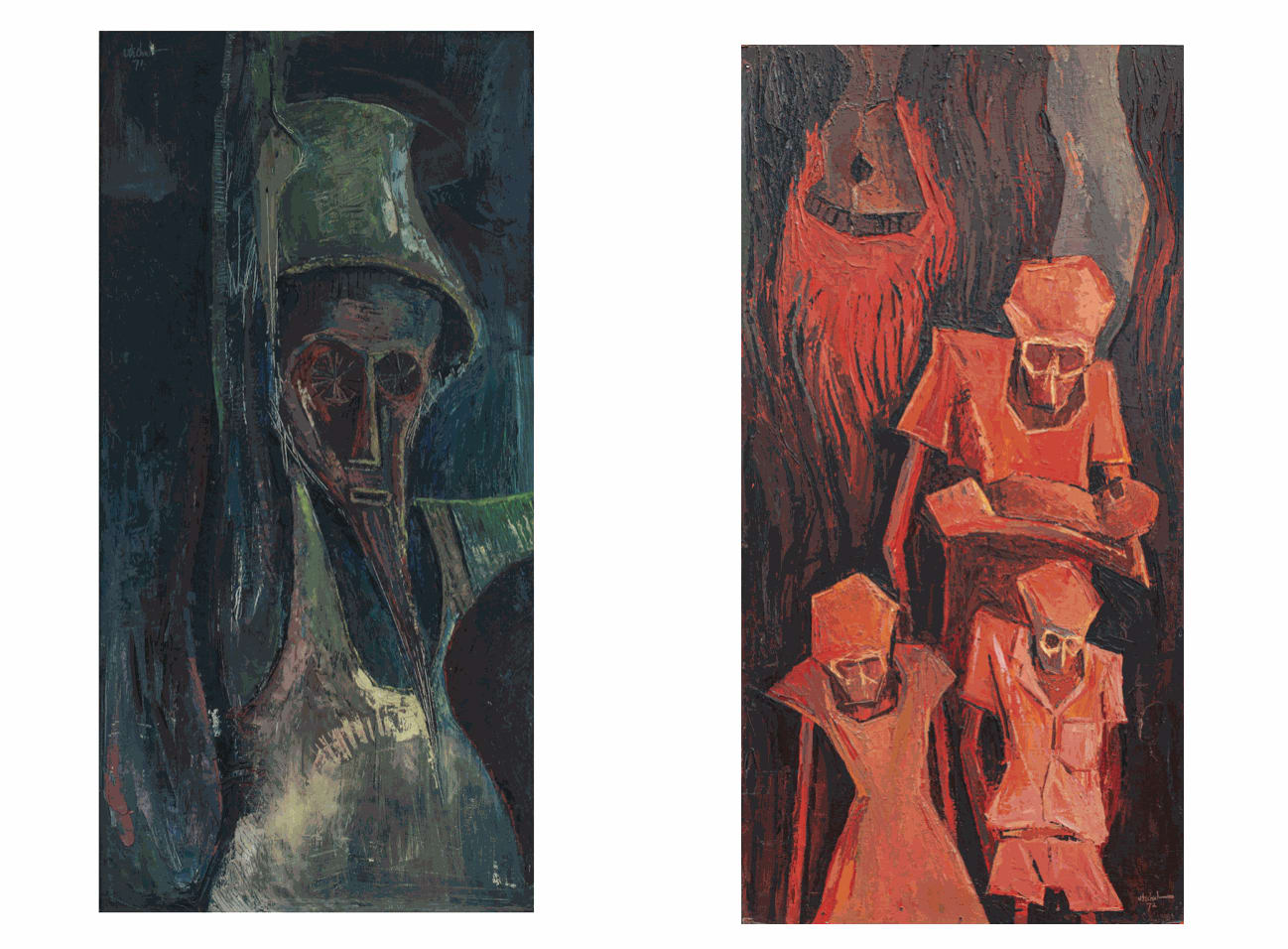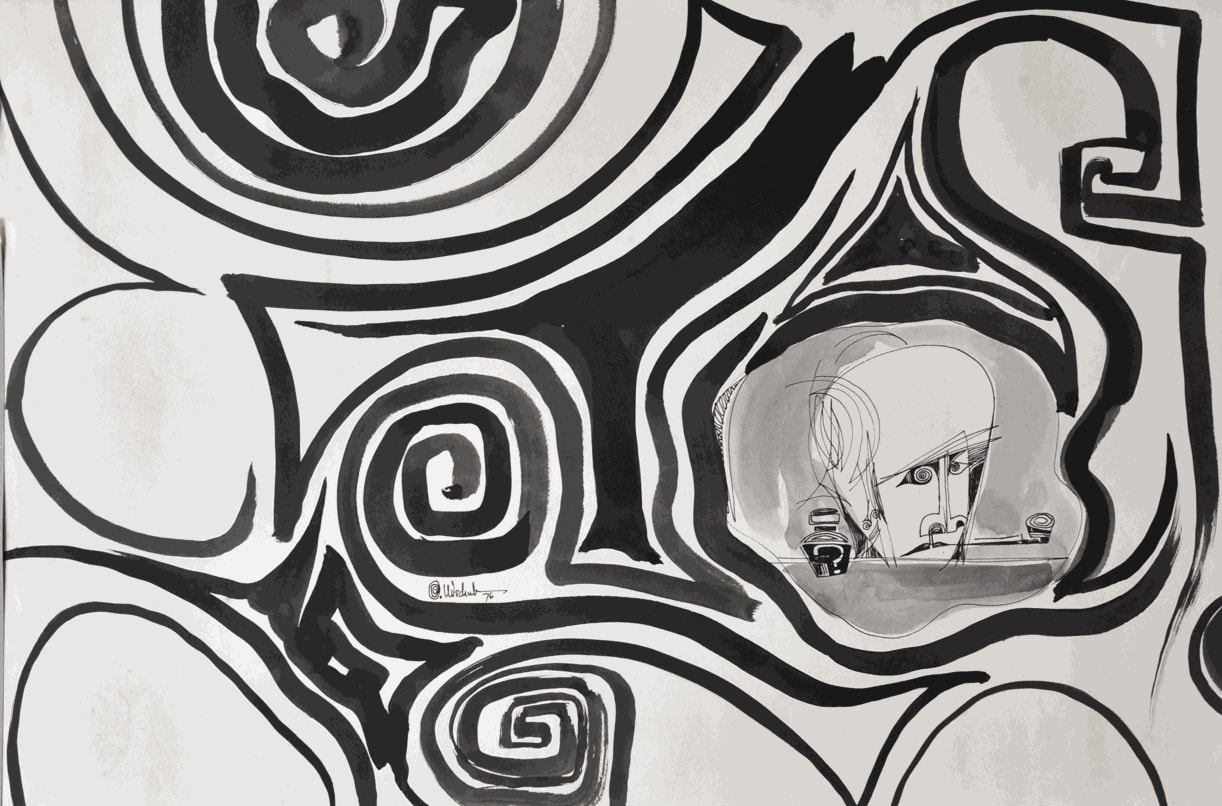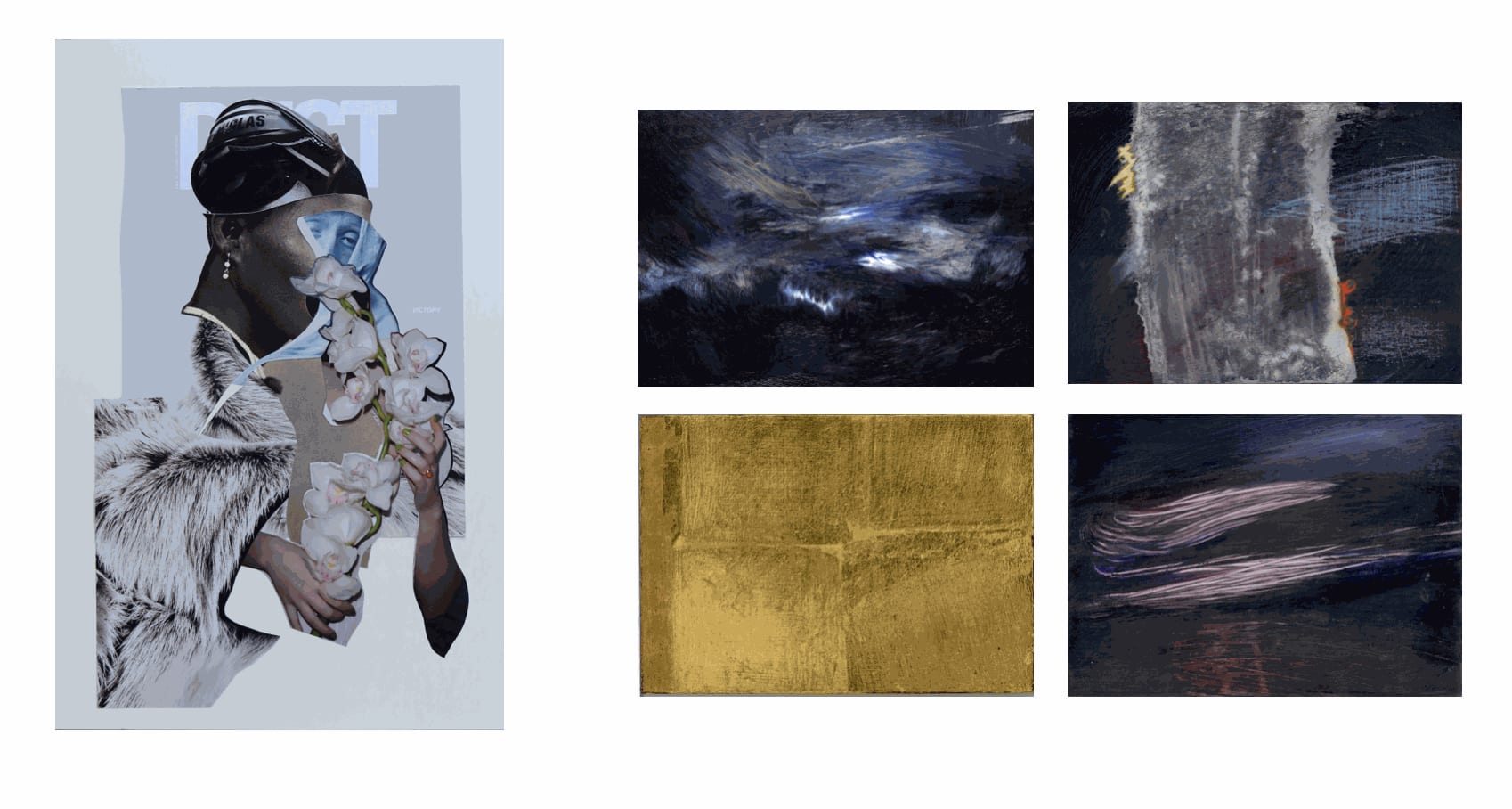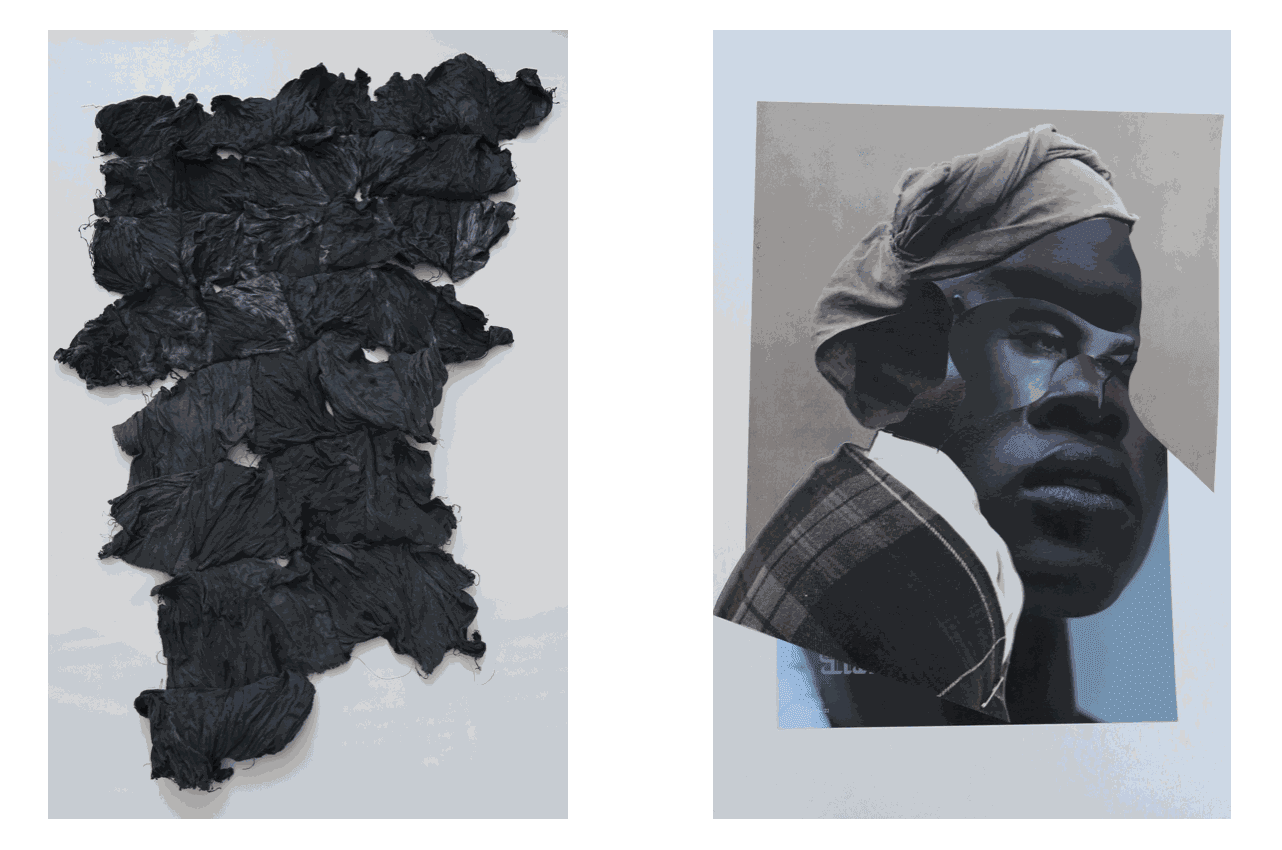kó is pleased to present Obiora Udechukwu and Marcia Kure at Abu Dhabi Art.
This presentation engages in a cross-generational dialogue between a past professor and student from Nigeria’s Nsukka School, exploring the nuances of drawing and mark-making within a technical, historical, and cultural lens.
The term "Nsukka School" refers to artists who have studied and taught at the Fine and Applied Arts Department of the University of Nigeria, Nsukka, located in Southeastern Nigeria, which places emphasis on experimentation as a critical aspect of the creative process. An important center for art education in Nigeria, the experimental trajectory of the post-Civil War art department at Nsukka was spearheaded by Uche Okeke and Chike Aniakor in the early 1970s, and has subsequently been led by prominent artists including Obiora Udechukwu and El Anatsui. The Nsukka School is best known for the revival of Uli, an Igbo art tradition that was historically used for body art and wall murals, bridging this visual language into contemporary art discourses.

Obiora Udechukwu (b. 1946, Onitsha, Nigeria) stands as one of Nigeria's most influential artists and poets, playing a pivotal role in the Nsukka school. His artistic career began in the late 1960s during the Nigerian Civil War. PAs a member of the second wave of modern artists emerging from Nigerian universities post-independence, Udechukwu pursued art studies at the University of Nigeria, Nsukka.. Udechukwu's intimate association with the Nsukka art department, where he served as an art teacher for many years until his relocation to the United States in the mid-1990s, underscores his modernist explorations of uli as a powerful resource in studio practice.This presentation includes paintings that are representative of Udechukwu’s wartime experiences, revealing how the trauma and upheaval of conflict profoundly influenced his work. In Mourning Family (1972), Udechukwu portrays a group of figures with solemn body language, set against the emotive tonality of reflected red light, conveying the human toll of displacement. Works such as Night Soil Man (1971) and Chameleon (1977) are oil-based figurative studies that exemplify Udechukwu's emotional depth and masterful use of color.

The presentation includes several drawings that highlight the sophistication of Udechukwu’s uli-inspired art, utilizing bold and thin lines and achieving visual depth through the intermediary use of ink washes. Udechukwu's art serves as a reflection of his varied responses to events, encounters, and experiences that have shaped his life. Core thematic elements in his work encompass tradition, history, memory, and a deep sensitivity to the human condition. These themes are effectively communicated through the poetic lyricism of traveling lines, the evocative ambiance of well-orchestrated colors, and the expressivity of formal codes derived from indigenous cultural resources.

(L) Marcia Kure, Dust, 2023, Collage on paper, 18 x 12 in. (R) Marcia Kure, installation of oil on board, 2023, 5 x 7 in. each.
Marcia Kure (b. 1970, Kano State, Nigeria) is a multidisciplinary artist whose work explores postcolonial and diasporic identities. Based in Nigeria and the United States, Kure employs diverse material strategies to engage with historical, actual, and potential systems of power and control. Careful consideration of source material is central to Kure’s practice which often incorporates a study of the Uli line, as well as natural, plant-based pigments. Kure graduated from the University of Nigeria, Nsukka in 1994, with a BA in painting, where she encountered Obiora Udechukwu as a professor, and mentor.
Kure’s work examines the act of drawing from technical, conceptual, and material perspectives. Her collages appropriate imagery from systems of knowledge production (ethnographic publications, auction catalogues, fashion magazines, and colonial photographic archives) to establish a framework for investigating line and drawing. Through cutting and tearing, Kure links fragmented ideas and images, and upends traditional foreground/background relationships. In her oil paintings, Kure captures the essence of her subject through swift gestures and elemental forms. In Script, Kure references quilting and patchwork as a corollary to the production of indigo and its historic relationship to market and labor, particularly to chattel slavery. These materials are treated with a deliberate intensity—wrung, marked, and scarred—treating the medium itself as a body. By considering the body as a communicative device, Kure's markings coopt script, text, and graffiti reminiscent of Vai (Liberia), Bamun (Cameroon), and Nsidibi and Uli script and body painting. Kure transforms these textiles to speak to the effect of power willed over objectivized bodies.

(L) Marcia Kure, Script, 2023, Indigo and acrylic on canvas, 72. 48 in. (R) Marcia Kure, For Ruth and Aisha, 2023, Collage on paper, 18 x 12 in.
Obiora Udechukwu and Marcia Kure engage in a dynamic artistic dialogue, exploring the significance of drawing and lines within their distinct cultural contexts. Reflecting on her formative years at university, Kure recalls Udechukwu's pivotal questions: "Why do you draw the way you do? What does line mean to you?" This inquiry prompted Kure to embark on a journey to discover her artistic voice, tracing her path back to the histories of drawing that shaped her artistic and cultural identity. Kure's recollection of her university experience under Udechukwu at Nsukka underscores the influential roles of educators: “Udechukwu’s questions set me on a path that has spanned over 30 years. He was the kind of teacher that nudged you to find for yourself new ways of understanding what specific studio processes and artistic concepts mean to you and how you might use them to connect to something much larger than yourself.”



